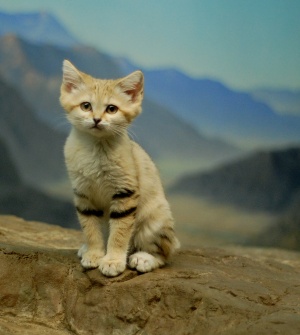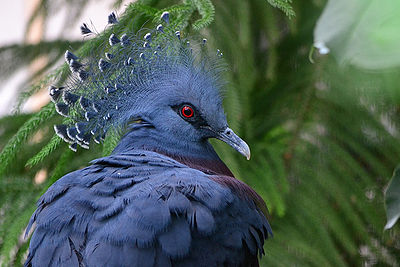
Sand Cats look like smaller versions of our domesticated pets. But don’t let size fool you, they are wild.
Sand Cats can be found from the Sahara throughout the Middle East into Turkestan in sandy and stony deserts.
Sand Cats are 10-12 inches tall, 29-36 inches long and weigh about 4-8 lbs. Their soft dense fur is pale sand or gray in color with a red band from each eye and across each cheek. Ears are reddish brown with black tips. Faint stripes are discernable down its flanks. There are black bands at the top of the front legs. The tail has 2-3 black rings near the black tip. The layer of wiry black hair covering the feet helps to insulate the pawpads against heat and cold and assist with walking in the sand. Their coat color blends with their habitat and hair coverings on the feet allow them to walk without sinking into the sand.
They are difficult to study because they crouch down and close their eyes preventing tracking from the reflected light of eyes. Study of diet from their excrement is extremely difficult because it disappears when they bury it in the sand.
These cats are nocturnal hunters, mainly digging for their prey. What is known about their diet is that it includes gerbils, birds, reptiles, arthropods (animals with external skeletons, segmented bodies and jointed appendages) and snakes. They often cover the uneaten portion of their kill with sand for later consumption.
Sand Cats are solitary animals but have a loud mating call which can sound like a small dog barking.
Captive Sand Cats can be seen in zoos, but litters have a high mortality rate. Adults have lived up to 13 years in captivity.
They are believed to have been companions of Mohammed and his followers will not kill them. But this is not always the case.
There is an ongoing breeding program to increase the population of Sand Cats whose numbers have diminished due to pet trade collectors and sport hunters.
Related articles:



